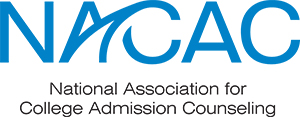As of January 2025, the landscape of standardized testing requirements in college admissions has changed. During the height of COVID-19, many schools released new policies to offer flexibility to students who may have experienced disruptions in taking the SAT or ACT exams. Since then, colleges have undergone another shift, with many reverting to their old testing requirements.
In this blog, we'll dissect which colleges are test-optional in 2025 and how recent changes will impact college applicants.
Table of Contents
- Understanding Test-Optional Policies
- When Should Students Submit Test Scores to Test-Optional Schools?
- Other Standardized Testing Information to Know
- How Have Test-Optional Policies Changed College Admissions?
Key Takeaways
- Test-optional gives students the freedom to choose whether they want to include their standardized test scores, without being at a disadvantage.
- Over 2,000 colleges in the United States remain test-optional in 2025; many of them having changed their policies indefinitely.
- Test-optional policies have permanently altered the college admissions process. As a result of test-optional policies, colleges are seeing record-high application submissions and changing the way they evaluate students.
Understanding Test-Optional Policies
In 2020, testing sites had to change all their practices to accommodate new social distancing regulations and try to find proctors at schools where staff were no longer working in the buildings. Many staff, students, and parents felt uncomfortable being in closed rooms with others for fear of falling ill. This resulted in the closure of test sites, with colleges under pressure to adopt test-optional policies.
Test-optional colleges allow students to choose whether to include their standardized test scores as part of their college application. As a result, admissions officers were instructed to evaluate only application components that were submitted, ensuring that students were not at a disadvantage if they decided to omit their scores.
What about the students who submitted scores? If scores were submitted, admissions officers did use them as part of their evaluation process.
Historically, many colleges and universities have long understood the biases of these tests and many were already revamping their testing requirements (more on that long history here). Families were surprised to learn that a handful of institutions were already test-optional for years before the effects of COVID-19. Today, some colleges remain test-optional and others have returned to their standard operating procedure. Before we go through the list of colleges still test-optional in 2025, let's understand the difference between each testing policy.
Test-Blind, Test-Optional, Test-Flexible and Test-Required Explained
| Standardized Testing Policy | |||
| Test-Optional | Test-Blind | Test-Flexible | Test-Required |
| Students have the choice if they want to submit their test scores or not. | Test scores are not considered as part of the evaluation process, even if a student submits them. | A test score is required, but it does not have to be the SAT or ACT. This can include an AP, IB or other standardized test score. | Test scores are required for admissions evaluation and/or merit scholarships. |
Related: Test Optional (And What the Heck it All Means)
Which Colleges Are Still Test-Optional in 2025?
Please note that this list is constantly changing. Be sure to review admissions requirements on a college's official website to understand the most up-to-date information or head to Fairtest.org for the extensive list.
Which Colleges Require Test Scores in 2025?
Several colleges reinstated standardized test requirements. The most notable institutions being the highly selective colleges or Ivy League institutions. Below is a list of highly selectives that require standardized tests:
- Harvard University
- Yale University
- Brown University
- Dartmouth College
- Massachusetts Institute of Technology (MIT)
- California Institute of Technology (Caltech)
- Georgia Institute of Technology
- University of Texas at Austin
- Purdue University
When Should Students Submit Test Scores to Test-Optional Schools?
This is a tricky question (and more on this discussion and crossroads here). The gist is that you should look at how your score compares to the national average, the college’s average, and against your own grades.
-
-
- Compare to national averages: The SAT national average is about 1000 and the ACT is about 20. If your scores are above, then that’s already a good sign.
- Compare to averages of the colleges you want to attend: The general feeling here has been to see if your score is in the middle 50% of scores. If so, this school might be a good target. If your score is in the top 25%, you can rest a bit easier. If your score is in the bottom 25%, you should not send in the score.
- Compare to your own grades: Do you have consistent grades and scores, or is there a discrepancy between your scores and grades? Colleges love consistency, so if your grades and test scores are good, then they feel reassured. If your grades are high and test scores seem low, then you might skip sending in the score. If you have low grades and high test scores, then that might be a red flag to them because they might wonder if you are applying yourself in the classroom. Good test scores rarely outweigh a low GPA, unless an explanation is provided by the student, counselor, or a recommender.
-
Whether a student should or shouldn't submit their test scores will ultimately boil down to the college they apply. For some colleges, a specific test result may strengthen their application, while at others it could severely impact their eligibility. It's important to evaluate the best course of action on a case-by-case basis.
Other Standardized Testing Information to Know
- All Scores refer to campuses, like Georgetown, that require students to submit ALL scores for ALL tests taken. The college will look at lowest, highest, and in-between scores. Sometimes colleges do this to infer if a student has done additional prep between tests, to see other trends in the student’s skills, and/or to see consistency among the test scores.
- Score Choice is the policy that most institutions abide by these days. This means the student has the option of which scores they can submit. They do NOT have to submit certain SAT/ACT, AP/IB, or Subject Test scores, unless they choose to do so. If they have taken multiple sittings of one test, such as the SAT, they can choose which test dates they can submit.
- Superscore means the highest section of math and verbal are used in the admissions or merit aid process. So, if a student takes the ACT multiple times, they can use the math score from one date and the reading score from a different date to produce the highest score combination.
- Test-No-Harm means students can submit their test scores and Admissions Officers will only use them if they will help the student get in. They will ignore them if they are lower than they want and students will be evaluated on all the other pieces of their application. This means that students don't have to go thru the stress of deciding whether or not to submit. UChicago is a good example here.
- Test-Preferred implies students are strongly encouraged to submit a test score, preferably the SAT or ACT. Purdue is a good example here.
How Have Test-Optional Policies Impacted College Admissions?
The cycle immediately following colleges' test policy announcements saw significant changes and ramifications. Since then, the dust has started to slowly settle, but there are effects that have permanently changed the college admissions process.
Increased Applications & Competitiveness
Students were (and are) applying to more schools than ever before. Not only were there more applicants, but students were submitting 2 or 3x the number of applications per cycle. These students, who historically would've opted out of applying to colleges with lower test scores, were now in a unique position. This was particularly true for highly selective colleges who showed record-low acceptance rates in recent years.
Today, we've seen applications slow down. Especially considering many highly selective colleges returned to their old test requirements. However, with the majority of colleges having adjusted their policies indefinitely, we're still facing unprecedented competitiveness in the college admissions process.
Colleges are Taking Test-Optional Seriously
Colleges seem to be staying true to their word that test-optional means test-optional. Students without test scores are still being accepted to many colleges, including highly selective ones.
More Colleges Are Adopting Holistic Review
Most colleges, especially highly selective ones, were already using holistic review. However, waving test scores is a continuation of that policy and encourages admissions officers to look beyond academics to evaluate students. Admissions committees now prioritize reviewing the whole application to factor in the lack of this data point. Application components such as essays, letters of recommendation, and extracurriculars play a bigger role in the admissions process than ever before.
About Us: With more than twenty years of experience, Collegewise counselors and tutors are at the forefront of the ever-evolving admissions landscape. Our work has always centered on you: the student. And just like we’ve always done, we look for ways for you to be your best self - whether it’s in the classroom, in your applications or in the right-fit college environment. Our range of tools include counseling, test prep, academic tutoring, and essay management, all with the support of our proprietary platform, leading to a 4x higher than average admissions rates.



/Blog%20CTAs%20(7).png?width=600&height=200&name=Blog%20CTAs%20(7).png)
.png?width=600&height=200&name=Blog%20CTAs%20(1).png)


